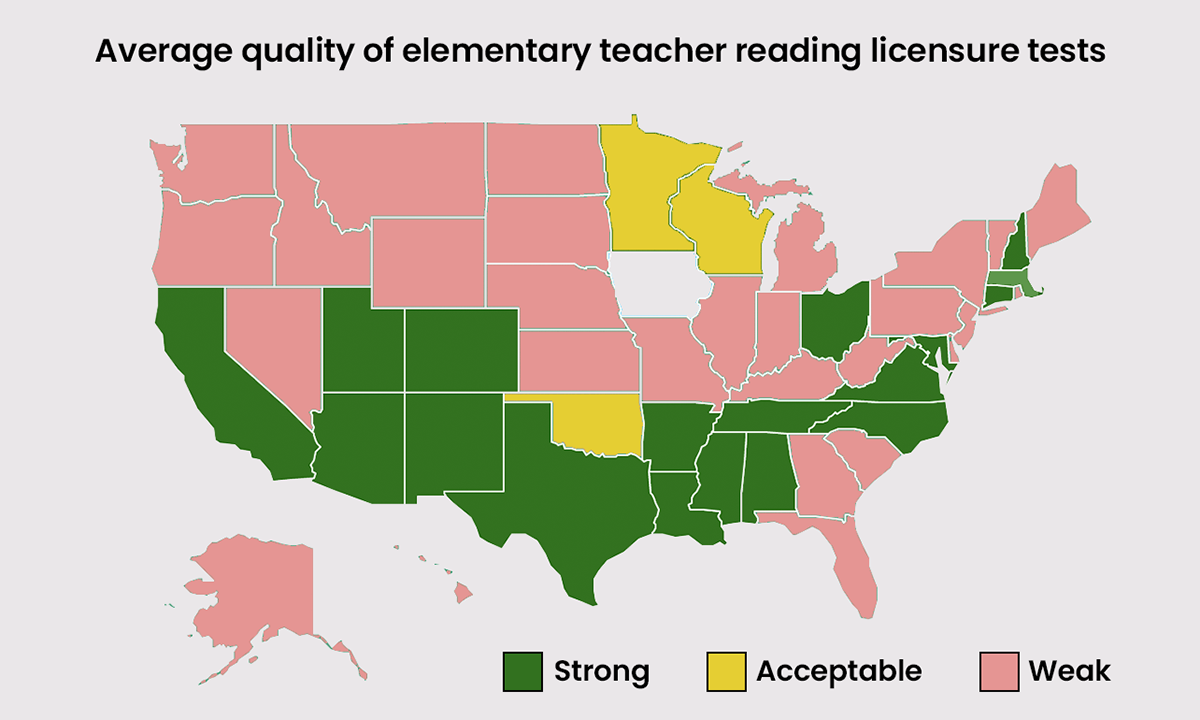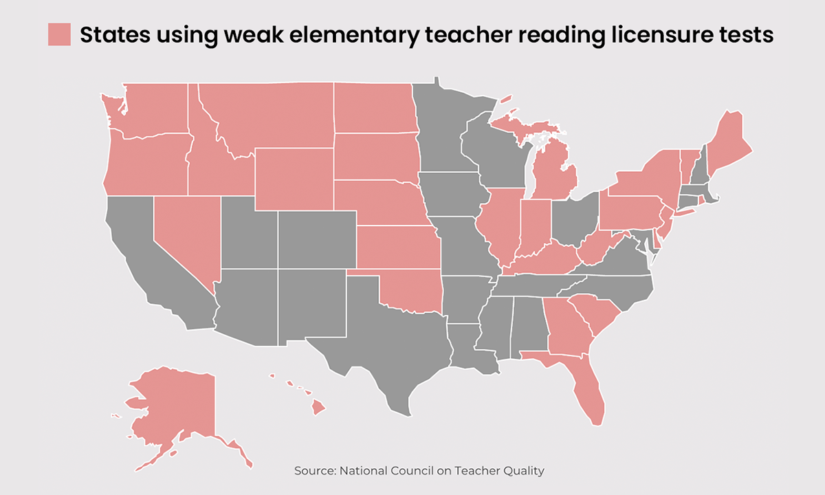Does Your State Use Weak Teacher Reading Tests? New Study Says A Majority Do
NCTQ study found a majority of elementary teacher reading licensing tests leave thousands of educators nationwide unprepared to help young students.

Get stories like this delivered straight to your inbox. Sign up for The 74 Newsletter
A majority of states use weak elementary teacher reading licensing tests — leaving thousands of young students with educators unprepared to help them learn a critical skill, a new study found.
According to the National Council on Teacher Quality, 29 states and the District of Columbia used weak tests, giving false assurance to nearly 100,000 educators nationwide.
The study’s findings were released as roughly one in three elementary students don’t meet reading expectations by fourth grade — with an even bleaker reality for historically marginalized students, the study said.
“Every child deserves great reading instruction, but far too many children aren’t receiving it,” NCTQ president Heather Peske said in a statement. “This lack of preparation has a profound impact on students’ literacy skills and future prospects.”
NCTQ reported 56% of Black students, 50% of Latino students, 52% of students in poverty, 70% of students with disabilities and 67% of English learners don’t meet reading standards, according to the National Center for Education Statistics.
The think tank determined whether states used strong, acceptable or weak elementary reading licensing tests based on how much each addresses the core components of scientifically based reading instruction.
The core components include phonemic awareness, phonics, fluency, vocabulary and comprehension.
Of the 25 different tests that states used, the think tank identified 15 as weak — with only four considered acceptable and six considered strong.
In total, 18 states used strong tests — including California, Texas, Connecticut, Colorado, Ohio and Virginia — and 28 states used weak tests — including Florida, Nevada, New York, New Jersey, Illinois and Hawaii.
Iowa in particular stood out for not requiring a test at all — suggesting teachers in the state would not be well-versed in how to teach reading, the study found.

Strong tests use at least 75% of the core components, in addition to addressing struggling readers and English learners.
Acceptable tests use at least half and weak tests use less than half of the core components identified.
Weak tests include the “Praxis Elementary Education: Multiple Subjects (5001)” test used in 16 states and the “Praxis Elementary Education: Content Knowledge for Teaching (7811)” test used in seven states.
“Teachers who aren’t prepared in the most effective instructional practices for teaching reading unknowingly enter classrooms ill-prepared to help students become successful readers,” Peske said. “States can help ensure teachers are prepared to teach reading effectively by requiring stronger licensure tests.”
Get stories like these delivered straight to your inbox. Sign up for The 74 Newsletter

;)
